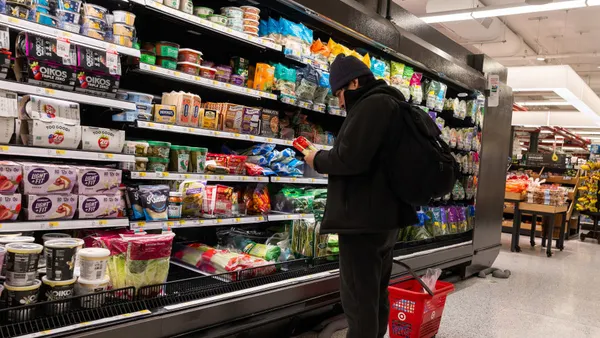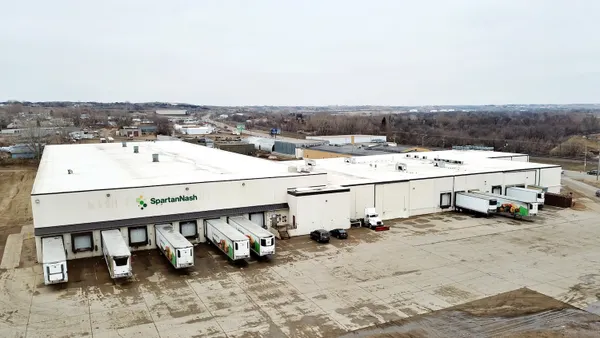Dive Brief:
- Amazon has one of the biggest advertising businesses in the retail sector and several retailers — including Kroger, Ahold Delhaize and Target — as well as digital retailers like Boxed are following suit with their own digital media services, according to reports.
- Walmart has lagged competing retailers in generating ad revenue, according to Bloomberg, and wants to boost revenue in the space. Kroger operates its Precision Marketing business while Southeastern Grocers last year launched SEG Media Hub and Albertsons introduced Albertsons Performance Media.
- At a recent event, Boxed CEO Chieh Huang said a growing portion of the company's revenue comes from ad sales, Adweek reported. Boxed can show brands who clicked on the product, what they bought and what the real-time ROI was on the spend.
Dive Insight:
As grocers continue to invest more dollars in store technology and e-commerce, advertising can be an additional source of revenue. According to 24/7 Wall Street, advertising dollars can be as much as six times the amount of typical retail margins of 5% or less. The data could give suppliers insight into the customer to efficiently reach their audience.
According to Bloomberg, Walmart has more monthly visitors to both its brick-and-mortar and online stores than Google, Facebook and Amazon. Breakdowns of data from those 300 million monthly in-store shoppers, in addition to its website visitors, would easily attract CPG brands, but grocers haven’t done enough to use that information.
So far, Walmart has mostly focused its advertising services on its rapidly growing e-commerce business, but is increasingly looking to connect data across store and online purchases. The company owns its own ad network called Walmart Media Group, which sells manufacturers on the opportunity to "connect with shoppers at every point along their digital purchase journey."
Kroger is on a mission to harness in-store and e-commerce purchase for advertising purposes, as well. In 2017, approximately half of U.S. households had a Kroger loyalty card, which Kroger uses to collect shopper data. The retailer also collects data from purchases in its e-commerce business. Last June, Kroger launched a self-service marketing platform called Boosted Products in Search that lets brands promote their products through ads listed on the Kroger Precision Marketing platform. A few years back, it also purchased dunnhumby’s data analytics arm to create its own consumer insights subsidiary called 84.51º.
Ahold Delhaize has also jumped on board. In November, the retailer created Peapod Digital Labs, which now partners with major brands like Coca-Cola. The platform provides insight and data to suppliers to target online and in-store shopping experiences to customers.
Before retailers started their own advertising sectors, CPG brands would have to get data on shoppers through third-party sources, according to Bloomberg. But even with that data, it was always a gamble on whether those ad dollars would translate to sales. Now, suppliers are able to choose data from specific retailers and can be confident that they are targeting the right audience.
Because of this advantage, retailers can charge suppliers a premium compared to third-party data services — and CPG brands are forking it over. But these high costs are resulting in higher priced goods for consumers. With many suppliers reining in their marketing dollars, it's unclear if grocers will be able to squeeze more out of CPGs, or if companies will simply shift their spending from traditional trade promotions and services to new ones.
According to a Gartner L2 report, a whopping $55 billion in CPG trade spending will migrate online in coming years and grocers aren’t well positioned to capitalize on it. That could be why major retailers and online-only grocers like Boxed are working on building their digital marketing platforms — but they shouldn’t neglect in-store opportunities.













